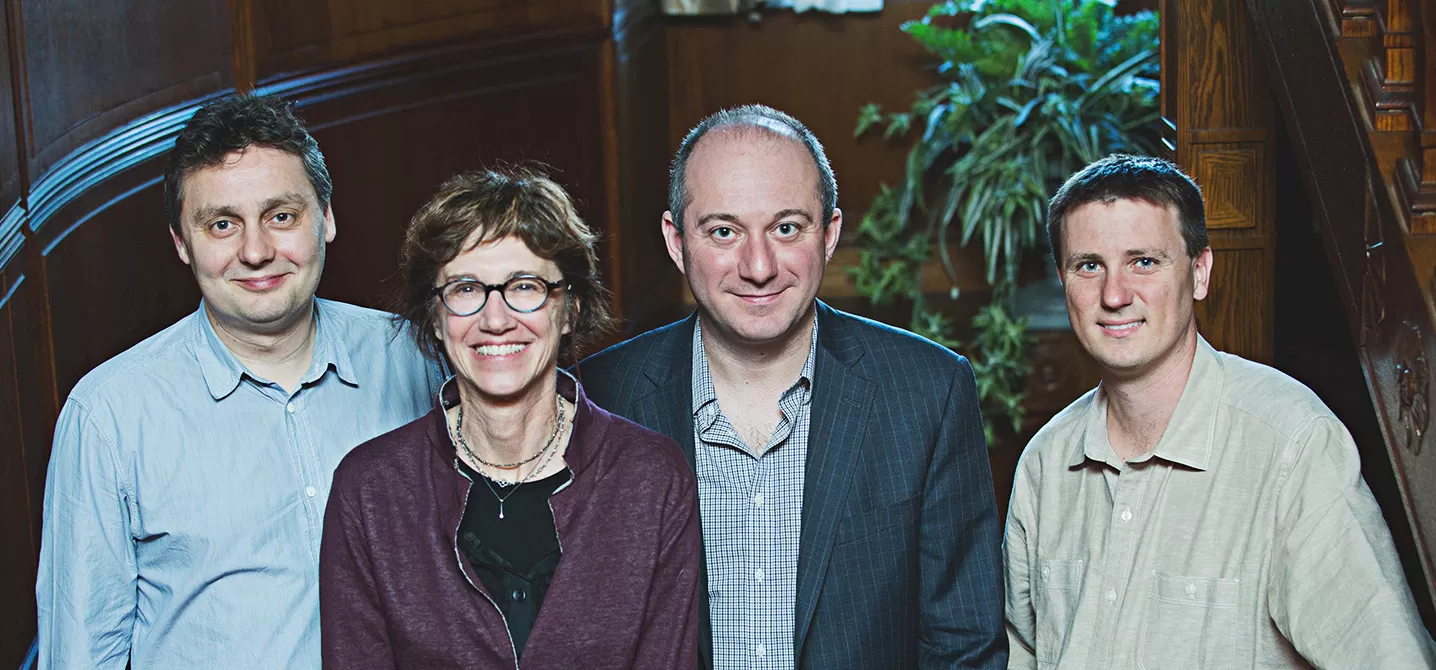Gene Therapy Consortium Progress Update

In mid November the members of our Gene Therapy Consortium met in Boston to share data, and engage in open and forthright discussions regarding emerging results and future strategy. Consortium members are sometimes joined by other scientists who can add fresh perspectives or expert advice. On this occasion, the consortium was joined by RSRT advisor, Timothy Riley, who is Associate Vice Chancellor for Innovation and Business Development at University of Massachusetts Medical School and who brings decades of pharma/biotech experience to the group.

Progress Update from Stuart Cobb
Overall, the consortium is making efforts on multiple fronts to overcome the hurdles that stand in the way of an effective gene therapy. These include:
1) Vector optimization – The vector is the Trojan horse that delivers the working copy of the gene into a cell. Together, members have tested multiple different permutations and so far the most critical factor appears to be a controller known as the promoter. For this reason, the consortium has gone back to look at how the MECP2 gene is regulated in cells in an attempt to build in some of the essential control mechanisms. There is one particular version that is looking very encouraging. It is now important that the results be independently confirmed in a second laboratory before progressing to larger scale studies.
Since we know that too much MeCP2 can be detrimental the group is looking beyond harnessing the normal control mechanisms of the gene, and looking for synthetic ways to control protein levels that could also act as a safety valve so that the gene could be switched off again if necessary. A boost to this concept comes from the recent work published by the Zoghbi lab in which drugs known as antisense oligonucleotides can act as effective antidotes to lower levels of MeCP2 in case too much is delivered.
2) Optimizing how much gene therapy to deliver – related to the above, the scientists have delivered different dosages of vectors in an attempt to see how much is needed to get an effect versus at what point toxicity develops. The work reported at the meeting suggests that there is a rather narrow “therapeutic window”. Present efforts are being directed towards enlarging the gap between doses producing the beneficial actions and those producing adverse actions.
3) Delivery route optimization – Gene therapy can be delivered via the blood stream, directly into the brain, or into the solution that bathes the brain (like an epidural injection). Each route has its own advantages and disadvantages and each route has been used in clinical trials for other disorders. For Rett Syndrome the animal work presented at the consortium meeting is so far pointing to the direct delivery being necessary to target as many brain cells as possible. The challenge ahead will be achieving a large dose that targets a meaningful high percentage of brain cells whilst at the same time not making too much MeCP2 or causing unacceptable adverse effects.

Remarks from Steven Gray
I came away from the recent consortium meeting very enthusiastic. When we started this consortium two years ago we knew that we faced significant challenges to developing a viable gene therapy approach for Rett Syndrome. Many of our initial approaches proved unsuitable for human application, but newer treatment designs appear to be overcoming those initial problems. Perhaps most encouraging is that multiple labs within the consortium are independently generating similar, safer treatment designs. While considerable work remains to determine if these current approaches are suitable for human translation, our labs have honed in on several design aspects of the treatment that can be further fine-tuned to make a safe and effective gene therapy treatment for Rett Syndrome.

Remarks from Brian Kaspar
We have been impressed with the encouraging survival and behavioral improvements to date. The safety data has to meet a very high bar so we are performing additional key studies. We have to get this right.
The talent sitting in our consortium is really exciting. From Stuart's and Gail’s expertise in the biology of Rett to Steve's pioneering work in vector optimization this is an exciting group to be a part of. Our science always improves following a consortium meeting as we take ideas and suggestions right back to the lab bench.
The multi-armed approach that this consortium is taking adds intelligent shots on goal. Also the presence, expertise and advice of Dr. Reilly seasoned in drug and biological drug development was invaluable and much appreciated. There is significant work still to do, but the path is becoming clearer.
A Message to our Donors
The Consortium would not be possible without RSRT’s supporters. Thank you so much to all our donors and to the families around the U.S. and the world that spearhead events and fundraising efforts. The Consortium’s progress is an example of your generosity at work for all girls and women with Rett Syndrome.


